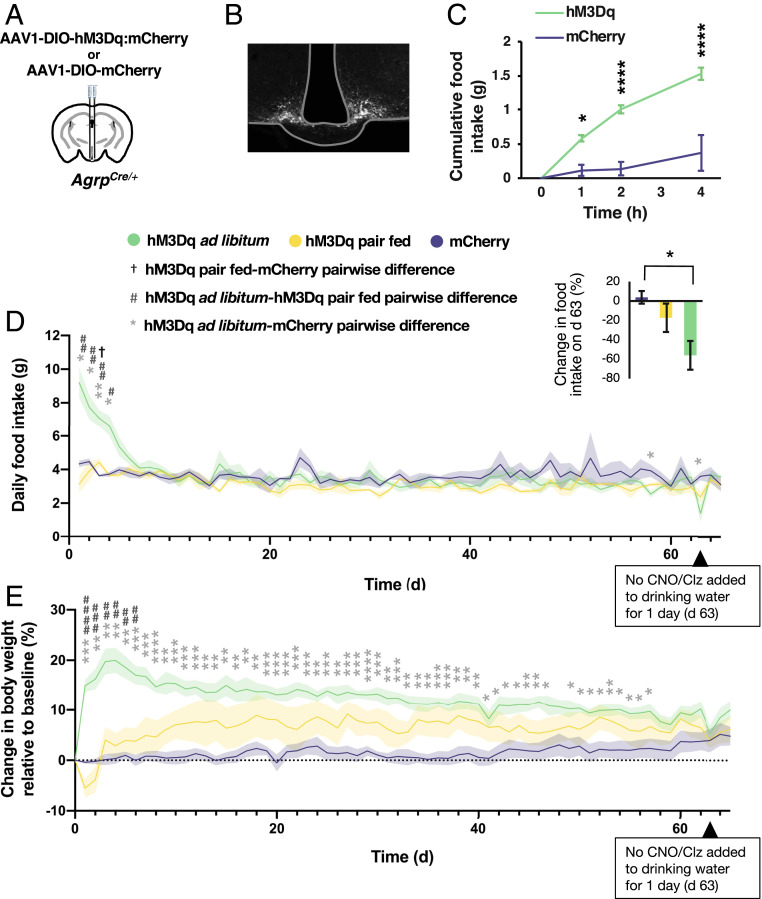Fig. 1.
Chronic Gq signaling in AgRP neurons is not sufficient to maintain chronic elevation of body weight. (A) Diagram of injection. (B) Histology of fluorescent AgRP neurons. (C) Food intake after CNO injection (two-way ANOVA; time: F(1.986,27.80) = 34.27, P < 0.0001; group: F(1,14) = 29.50, P < 0.0001; interaction: F(3,42) = 13.67, P < 0.0001; *P < 0.05, ***P < 0.001, Sidak’s multiple comparison). (D) Daily food intake during treatment with CNO (days 0 to 46) or Clz (days 47 to 62, and 64 and 65) in drinking water (mixed effects model; time: F(6.556,83.690) = 8.638, P < 0.0001; group: F(2,13) = 1.847, P = 0.197; interaction: F(128,817) = 4.281, P < 0.0001; †P < 0.05, #P < 0.05, *P < 0.05, ##P < 0.01, **P < 0.01, Tukey’s multiple comparison). (Inset)Change in daily food intake on day 63, when CNO/Clz treatment was not provided for 1 d, relative to average daily food intake across the 3 d immediately prior (one-way ANOVA: F(2,13) = 6.432, P = 0.0114; *P < 0.05, Tukey’s multiple comparison). (E) Body weight during CNO/Clz treatment (mixed effects model; time: F(4.931,63.04) = 4.875, P = 0.0008; group: F(2,13) = 8.555, P = 0.0043; interaction: F(130,831) = 6.225, P < 0.0001; *P < 0.05, ##P < 0.01, **P < 0.01, ###P < 0.001, ***P < 0.001, ####P < 0.0001, ****P < 0.0001, Tukey’s multiple comparison).

